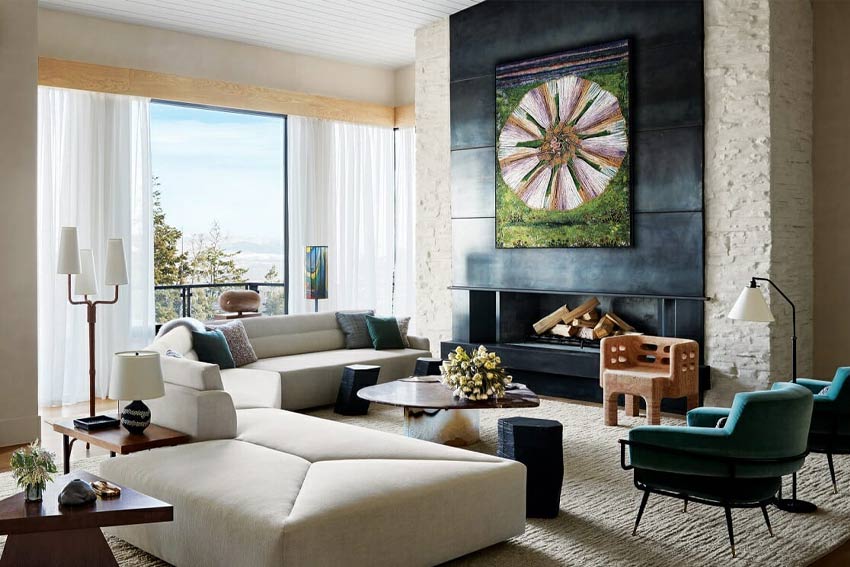
Designing a home interior with natural elements
In interior design, incorporating natural elements has become increasingly popular. Designers alike are drawn to the calming, grounding effects that nature brings to a space. Integrating natural components creates a serene and inviting atmosphere that promotes well-being and tranquillity in interior design or any other location.
Power of plants
Using plants is a great way to add natural elements to your home interior. Indoor plants add visual interest and a pop of colour to a room and offer numerous health benefits. When selecting plants for your home, consider your space’s lighting conditions, as well as your personal style and maintenance preferences. Some popular indoor plant options include:
- Snake plants – These low-maintenance plants are perfect for beginners and thrive in various lighting conditions.
- Pothos – Known for their trailing vines and easy care requirements, pothos plants are an excellent choice for shelves or hanging baskets.
- Fiddle leaf figs – These trendy plants boast large, glossy leaves and make a stunning statement in any room.
- Succulents – Low-maintenance and available in various shapes and sizes, succulents are ideal for those who want a touch of greenery without the hassle.
Natural materials and textures
- Wood – From hardwood floors to wooden furniture and accents, the warmth and character of wood can add depth to a space.
- Stone – Natural stone, such as marble, granite, or slate, is used for countertops, fireplace surrounds, or decorative elements to bring a sense of durability and elegance.
- Natural fibers – Incorporate natural fibres like cotton, linen, wool, or jute through your choice of textiles, such as curtains, rugs, or throw pillows.
- Woven elements – Baskets, woven wall hangings, or rattan furniture add texture and visual interest while maintaining a natural aesthetic.
When selecting natural materials, consider the overall style of your home and aim for a balanced texture mix to create an inviting space.
Biophilic design principles
Creating biophilic spaces connects humans with nature to improve overall well-being. Some fundamental principles of biophilic design include:
- Visual connections with nature – Incorporate views of nature, whether through windows, nature-inspired artwork, or indoor plants.
- Non-visual connections with nature – Engage other senses through natural materials, textures, and sounds, such as a water feature or a gentle breeze from an open window.
- Dynamic and diffused light – Mimic is the natural variations in light found in nature through adjustable window treatments, dimmers, or layered lighting.
- Presence of water – Incorporate water features like fountains or aquariums to add a soothing element to your space.
Collaboration with interior design professionals
While it’s possible to incorporate natural elements into your home on your own, working with experienced interior design professionals can help you create a cohesive and harmonious space that truly embodies the essence of nature. Interior Design In Naples or elsewhere can offer valuable insights and expertise in selecting colours, materials, and decor that align with your vision and preferences. When collaborating with an interior designer, be sure to:
- Communicate your goals and preferences clearly
- Share inspirational images or mood boards to help convey your desired aesthetic
- Be open to suggestions and ideas that may enhance your original vision
- Establish a clear budget and timeline for the project
Whether you embark on this journey in collaboration with experienced interior design professionals or beyond, remember that even small touches of nature significantly impact your home’s overall feel and atmosphere.
